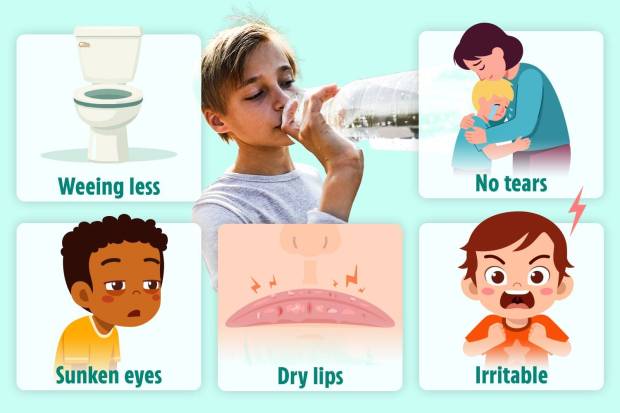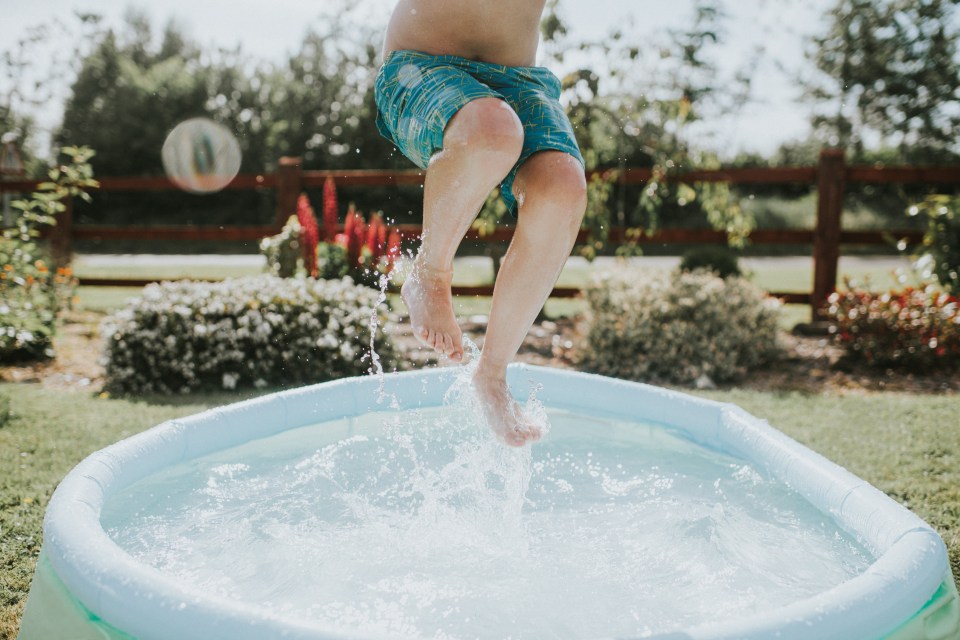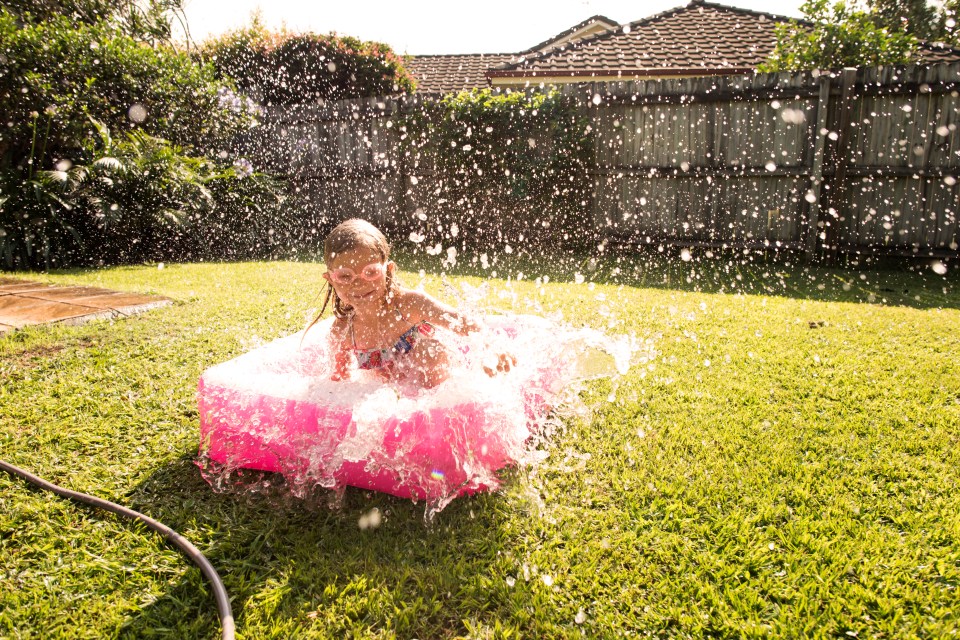PADDLING pools are a great way for kids to cool off during hot weather.
But used incorrectly, they can be a serious health hazard, experts warn.
There are seven common mistakes in particular that could have serious consequences, and even be fatal.
Here’s how to avoid them so you can keep your water-loving little ones safe as temperatures soar.
1. Leaving kids alone
If your child is happily playing in the garden, it can be easy to assume you’re OK to briefly leave them unsupervised.
But it only takes a few minutes to drown, so doing so could be deadly, according to the Royal Lifesaving Society UK (RLSS).
READ MORE ON SUMMER HEALTH
Charity director Lee Heard tells The Sun: “Sadly, drowning can happen very quickly.
“It’s vital to ensure that you do not leave your child alone when they are in or near water.
“Never leave them unsupervised.”
According to the National Drowning Report 2024, 86 per cent of child drownings in England occurred when the child was unsupervised by an adult.
2. Not emptying the pool between uses
Once swimming time is over, it might cross your mind to leave the water in the pool to save refilling it the following day.
But it’s vital to empty it as soon as you’re finished with it to prevent your child coming across it while alone.
Hannah Smith, director of aquatics at Water Babies, says: “Paddling pools are great fun in the garden on a hot summer’s day, but always keep water safety a priority, even if your children are in a paddling pool with just a few inches of water.”
3. Covering it in a sheet
Over the summer, the internet is flooded with videos from mums sharing what they describe as “paddling pool hacks”.
One of the most popular involves covering pools in an old sheet to keep bugs out and save water.
But doing so is incredibly dangerous as it puts youngsters at risk of drowning, swimming instructor Nikki Scarnati warns.
Not using the right temperature water can cause a sudden increase in blood pressure, and the strain placed upon the heart can result in heart problems
Professor Mike Tipton
The mum, who shares water advice in videos on TikTok, tells her followers: “This is not a hack, it’s a complete drowning risk.
“A child can drown in an inch of water in 20 seconds.
“Leaving a kiddie pool out with water in it is already a drowning risk.
“So don’t put a blanket on top of it, because if they fall into it or on top of the blanket, they are going to roll around trying to get out.
“They’re going to get wrapped up in that blanket and they’re not going to be able to get back up.”
In 2022/23, three children drowned in hot tubs after they were left uncovered.
One in three youngsters that drowned at home between April 2019 and March 2023 did so in places like paddling pools, hot tubs and ponds.
4. Not turning the pool upside down
Once the pool is empty, it’s important to turn it upside down.
“This means that water, from a rain shower, for example, cannot collate in the paddling pool if it is left upright and become a potential hazard,” Lee says.
At least 26 children aged 14 and under lost their lives to accidental drowning in the UK in 2022, he adds.
5. Staying in full sun
When splashing about in a cool paddling pool, it’s easy to forget how strong the sun’s rays are.
Even with proper protection, kids are easily burnt and dehydrated.
It is therefore important to keep your pool, and tots, in the shade, Dr Sarah Jarvis, an NHS GP, says.
And don’t forget a hat and sun cream!
The 9 signs your child is dangerously dehydrated

By Eliza Loukou, Health Reporter
DEHYDRATION is something that should concern all parents, whatever the age of their tots.
But mums and dads should be “particularly careful” if their children are under one, according to GP and clinical consultant for patient.info Dr Sarah Jarvis – and even more so if their baby is six months and younger, was born prematurely or had a low birth weight.
Factors like tummy bugs – which are extremely common in young children, according to Dr Jarvis – and whether you’ve recently stopped breastfeeding might make dehydration more likely.
Here are nine warning signs of dehydration that all mums and dads should look out for…
- They’re weeing less
- They’re not producing tears
- They have a sunken soft spot on their head
- They have sunken eyes
- Their lips are dry
- They’re complaining
- Their hands and feet are cold
- They seem irritable
- They’re breathing faster than normal
According to the NHS, you should ask for an urgent GP appointment or get help from NHS 111 if:
- Your child seems drowsy
- They seem confused and disorientated
- Your baby has fewer wet nappies
- Your child is breathing quickly or has a fast heart rate
- Your baby or child has few or no tears when they cry
- Your baby has a soft spot on their head that sinks inwards (sunken fontanelle)
These can be signs of serious dehydration that need urgent treatment.
Potential complications include urinary tract infections, kidney failure and stones, seizures, coma and, in extreme cases, death.
6. Using water that is too cold
If being used by children, the water in paddling pools should be at least 29C, according to Water Babies.
But if you’re helping a baby under 12 weeks or 12lbs take a dip, it must be a minimum of 32C.
A spokesperson for the company adds: “Older babies can swim in 30C pools and toddlers under two years can swim in 29C pools so long as they are wearing a wetsuit.”
Professor Mike Tipton, who specialises in extreme environments, says: “The response to sudden cold water immersion can cause a range of physiological responses, such as gasping and hyperventilation, that can quickly result in drowning.
“There is also a sudden increase in blood pressure and the strain placed upon the heart that can result in heart problems.”
7. Using potentially dangerous floats
Finally, parents shouldn’t strap their kids into pool floats with canopies overhead, Nikki, from Florida, US, warns.
She says the shade-providing devices – designed to let youngsters lie on their backs or stomachs in the water – can easily flip over and leave children face down in the water.
As they’re buckled into the inflatables, they have no way to turn over again and can quickly drown.
“All it takes is for a child to lean forward a little too much and they’re going to flip over,” she says.
“And if they do flip over, they’re strapped into this device so it’s going to be more difficult for you to remove your child and get them poolside to evaluate them.
“The canopy could get stuck on top of them so it’s going to be extremely hard for you to find your child and pull them out.”
Good alternatives, Nikki says, are clear-bottomed inflatable rafts and mesh loungers, but overall it’s best not to use floats at all.














